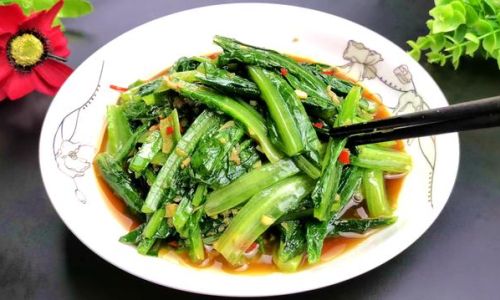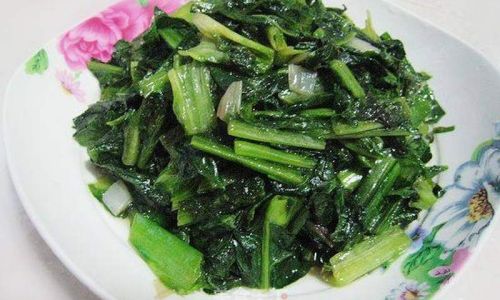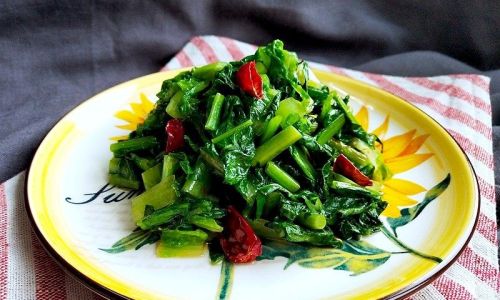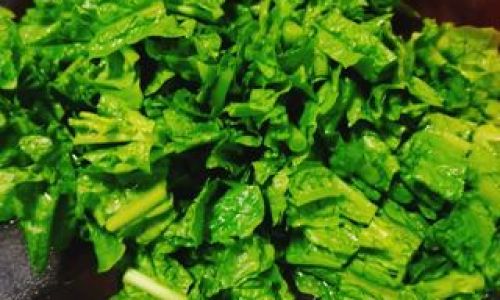Stir-fried lettuce leaves, or chǎo wō sùn yè in Mandarin, is a classic Chinese dish that highlights the simplicity and freshness of ingredients. Often overlooked in Western cuisine, lettuce leaves transform into a vibrant, crisp, and flavorful dish when stir-fried with aromatic garlic, ginger, and a touch of soy sauce. This tutorial will walk you through every step of preparing this dish, from selecting the freshest greens to mastering the stir-fry technique. By the end, you’ll have a restaurant-quality meal that’s both healthy and delicious.

Introduction to Stir-Fried Lettuce Leaves
Stir-frying is a cornerstone of Chinese cooking, a method that preserves the texture, color, and nutrients of vegetables through rapid cooking over high heat. Lettuce leaves, with their mild bitterness and tender crunch, are an ideal candidate for this technique. Unlike salads or soups, stir-fried lettuce leaves take on a savory depth while retaining their refreshing quality. This dish is not only easy to prepare but also versatile—it pairs beautifully with rice, noodles, or as a side to grilled meats.
Why Stir-Fried Lettuce Leaves?
- Nutritional Powerhouse: Lettuce leaves are low in calories but rich in vitamins A, K, and folate. They also provide dietary fiber, aiding digestion.
- Quick and Simple: From prep to plate, this dish takes under 15 minutes, making it perfect for busy weeknights.
- Customizable: Add protein like tofu or shrimp, or experiment with spices like chili flakes for extra heat.
Ingredients You’ll Need
Before diving into the cooking process, gather your ingredients. Precision in measurements ensures balance in flavor.
- 400g fresh lettuce leaves (preferably romaine or iceberg, washed and dried)
- 3 garlic cloves, minced
- 1-inch ginger, grated (optional, but recommended for depth)
- 2 tbsp cooking oil (neutral oil like vegetable or peanut works best)
- 1 tbsp soy sauce (light soy sauce for saltiness, or tamari for gluten-free)
- 1 tsp oyster sauce (or vegetarian stir-fry sauce for a vegan alternative)
- 1/2 tsp sugar (to balance bitterness)
- 1/4 tsp white pepper (or black pepper)
- 1/2 tsp sesame oil (for finishing)
- Salt to taste
- Optional: 1 red chili, sliced (for heat), or 1 tbsp Shaoxing wine (for umami)
Step 1: Preparing the Lettuce Leaves
The key to crisp stir-fried lettuce lies in proper preparation.
- Wash and Dry: Separate the lettuce leaves and rinse them under cold water. Pat dry thoroughly with a salad spinner or clean kitchen towel. Excess moisture will steam the leaves instead of stir-frying them, leading to a soggy texture.
- Cut Uniformly: Tear or chop the leaves into bite-sized pieces (3-4 inches). Larger leaves may wilt unevenly.
- Separate Stems and Leaves: If using lettuce with thick stems (like romaine), slice the stems into 1/4-inch pieces and set aside. Add them to the wok first, as they take longer to cook.
Step 2: Prepping Aromatics
Aromatics form the flavor base of the dish.
- Garlic and Ginger: Mince garlic and grate ginger finely. For a milder taste, use half the garlic.
- Chili (Optional): Slice a red chili into thin rings. Remove seeds for less heat.
Step 3: Mastering the Stir-Fry Technique
Stir-frying requires high heat and quick movements. Follow these tips for success:
- Use a Wok or Large Skillet: A wok’s concave shape distributes heat evenly. If unavailable, a stainless-steel or cast-iron skillet works, but avoid non-stick pans, which can’t withstand high heat.
- Heat the Wok First: Place the wok over high heat for 2-3 minutes until a drop of water evaporates instantly. This ensures a searing hot surface.
- Add Oil Correctly: Swirl 2 tbsp of oil around the wok to coat the sides. Neutral oils with high smoke points (like peanut or vegetable) prevent burning.
Step 4: Cooking the Dish
Now, let’s bring everything together.
-
Stir-Fry Aromatics:

- Add minced garlic and ginger to the hot wok. Stir-fry for 10-15 seconds until fragrant but not browned.
- If using chili, add it now and toss for 5 seconds.
-
Cook the Lettuce Stems (if applicable):
Add sliced lettuce stems first. Stir-fry for 1 minute until slightly softened.
-
Add the Leaves:
- Toss in the lettuce leaves. Use a spatula to fold them into the aromatics, ensuring even coating.
- Stir-fry vigorously for 2-3 minutes. The leaves will wilt but retain some crunch. Avoid overcooking, which turns them mushy.
-
Season the Dish:
- Drizzle soy sauce and oyster sauce around the edges of the wok (not directly on the leaves) to prevent sogginess.
- Sprinkle sugar and white pepper. Toss quickly to combine.
-
Finish with Sesame Oil:
Drizzle sesame oil over the dish and remove from heat immediately. Sesame oil burns easily, so add it at the end.
Step 5: Serving and Presentation
Stir-fried lettuce leaves are best enjoyed immediately to preserve their crispness.

- Plate: Transfer to a serving dish. Garnish with toasted sesame seeds or sliced scallions for color.
- Pairings: Serve with steamed jasmine rice, fried rice, or noodles. It also complements grilled chicken, beef, or tofu.
- Optional Twists:
- Spicy Version: Add a splash of chili oil or Sriracha before serving.
- Umami Boost: Finish with a drizzle of Shaoxing wine or a pinch of MSG (optional).
Troubleshooting Common Issues
-
Soggy Lettuce:
- Cause: Excess moisture or low heat.
- Fix: Ensure leaves are dry before cooking. Use high heat and stir-fry rapidly.
-
Burnt Garlic:
- Cause: Overcooking aromatics.
- Fix: Add garlic and ginger just before the leaves. Stir constantly.
-
Bland Flavor:
- Cause: Under-seasoning or uneven sauce distribution.
- Fix: Taste and adjust seasoning. Pour sauces around the wok’s edges for caramelization.
Health Benefits of Stir-Fried Lettuce Leaves
- Low in Calories: A 100g serving contains just 15 calories.
- Rich in Antioxidants: Lettuce is packed with vitamins C and K, which support immune function and bone health.
- Hydration: With 95% water content, it aids in digestion and skin health.
Cultural Context
In Chinese cuisine, green vegetables like lettuce symbolize prosperity and are served during festivals. Stir-frying preserves their vibrant color, making them visually appealing on the dinner table. This dish is a staple in Cantonese homes, where fresh produce is celebrated.
Variations to Explore
-
Garlic Lettuce with Fermented Black Beans:
Add 1 tbsp fermented black beans (rinsed) to the aromatics for a pungent, salty kick.
-
Lettuce with Dried Shrimp:

Stir-fry 1 tbsp dried shrimp with the garlic for a briny, umami-rich twist.
-
Vegetarian Mushroom Lettuce:
Sauté sliced shiitake mushrooms before adding the leaves for earthy depth.
Storing Leftovers
Stir-fried lettuce leaves are best eaten fresh, but leftovers can be stored in an airtight container in the fridge for up to 24 hours. Reheat gently in a pan over medium heat to maintain texture.
Conclusion
Stir-fried lettuce leaves are a testament to the beauty of simple, wholesome cooking. With minimal ingredients and technique, you can create a dish that’s both elegant and comforting. Whether you’re a novice cook or a seasoned chef, this recipe invites you to savor the harmony of flavors and textures that define Chinese home cooking. Experiment with seasonings, share it with loved ones, and let the crisp, aromatic notes of this dish become a staple in your culinary repertoire.
Final Tip: The key to perfect stir-fries is practice. Adjust the seasoning and heat to suit your taste, and soon you’ll master the art of wok hei—the breath of the wok—that elevates every dish. Enjoy!





0 comments